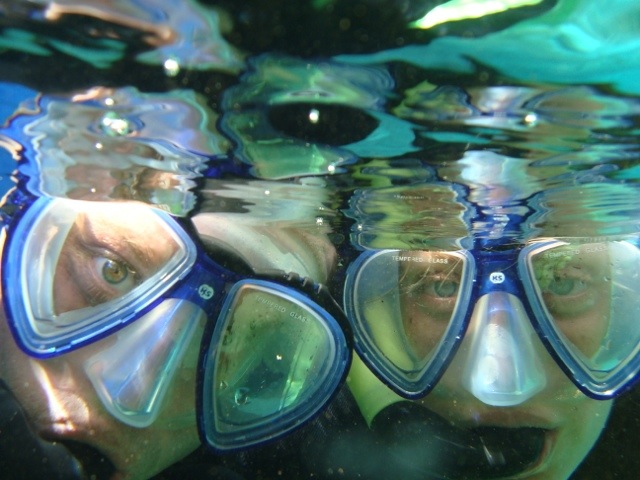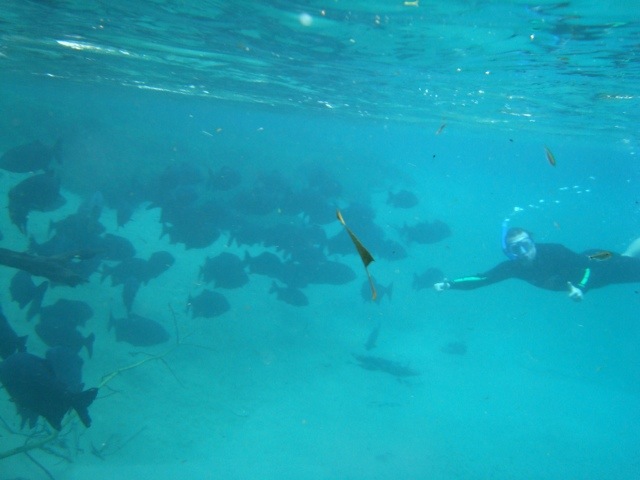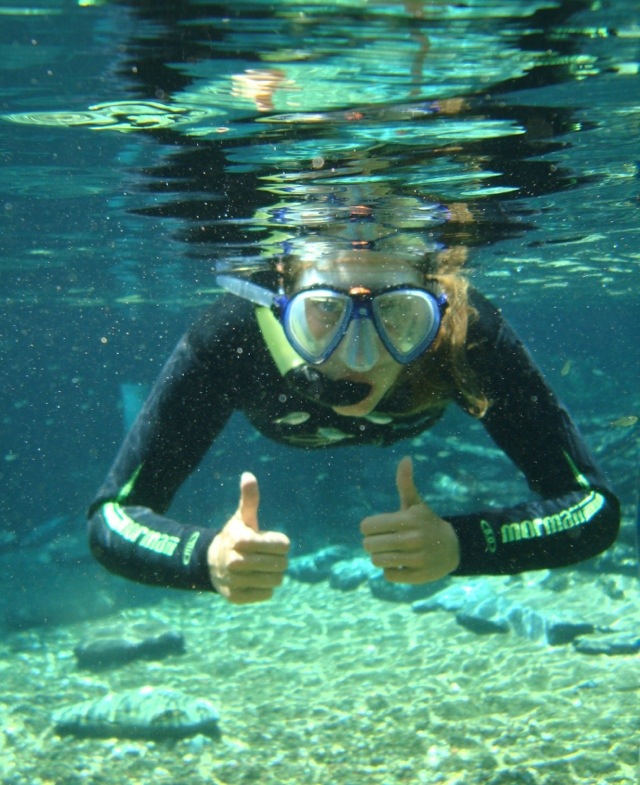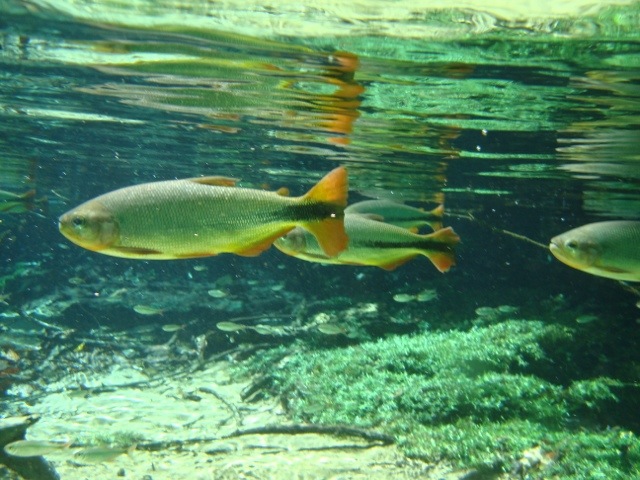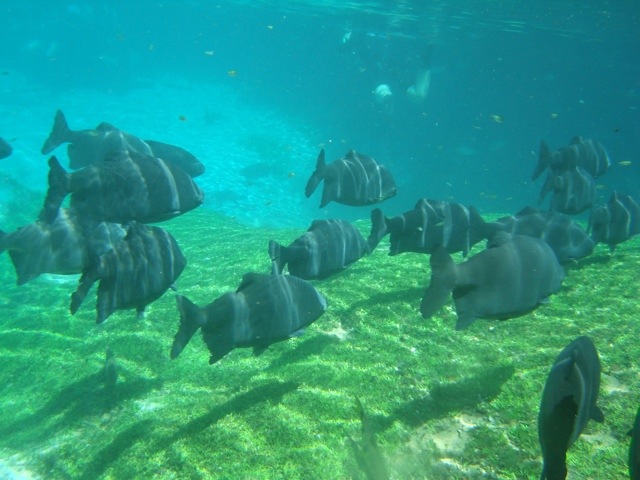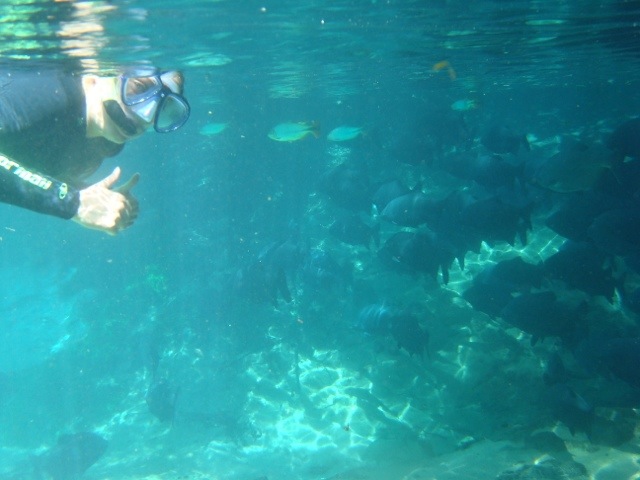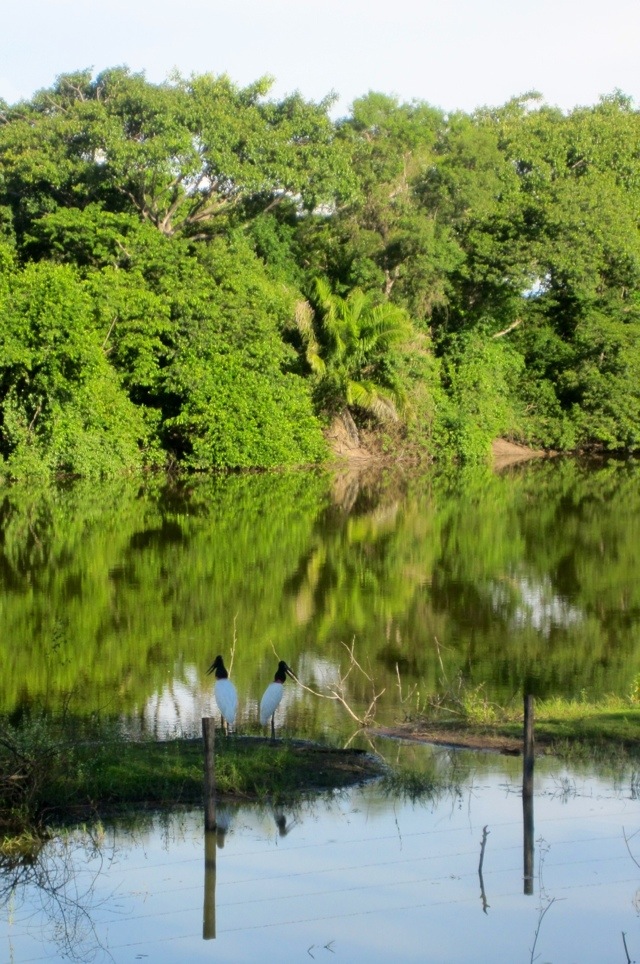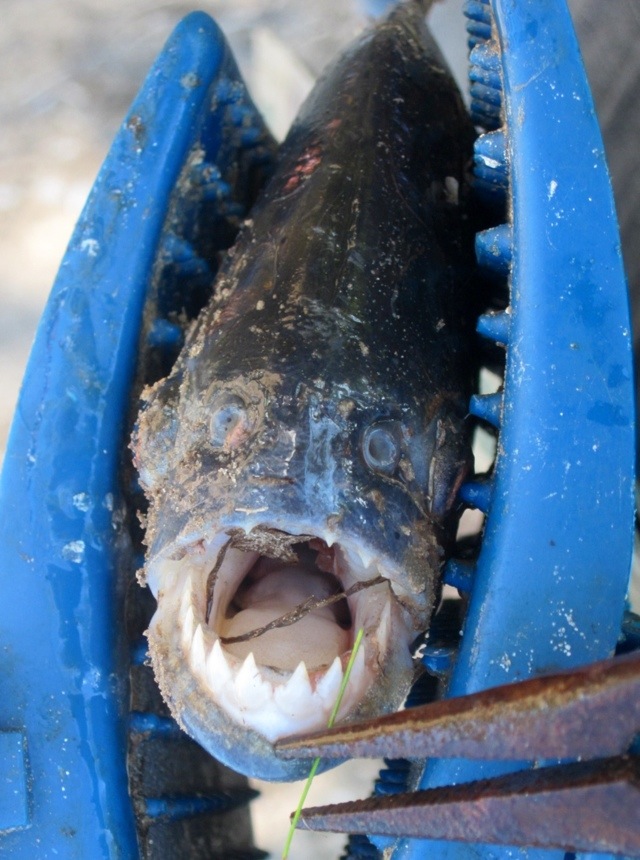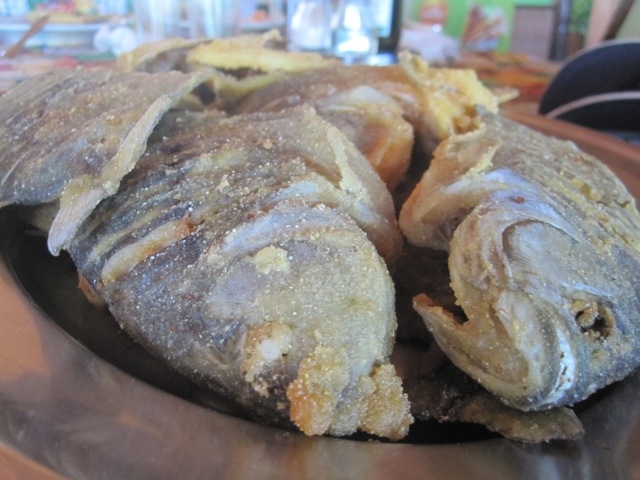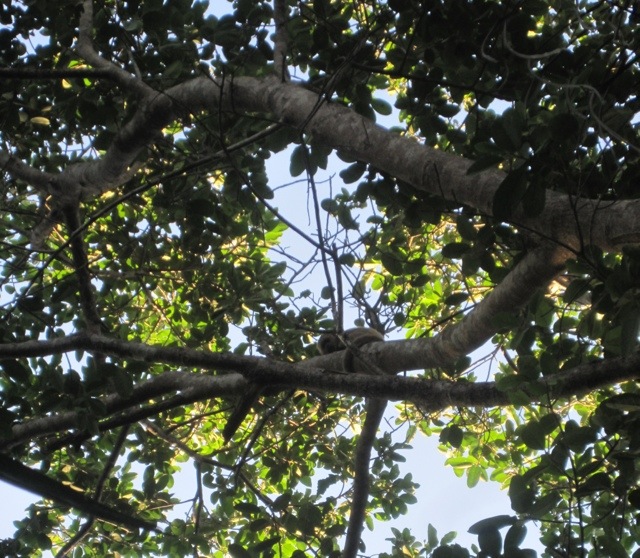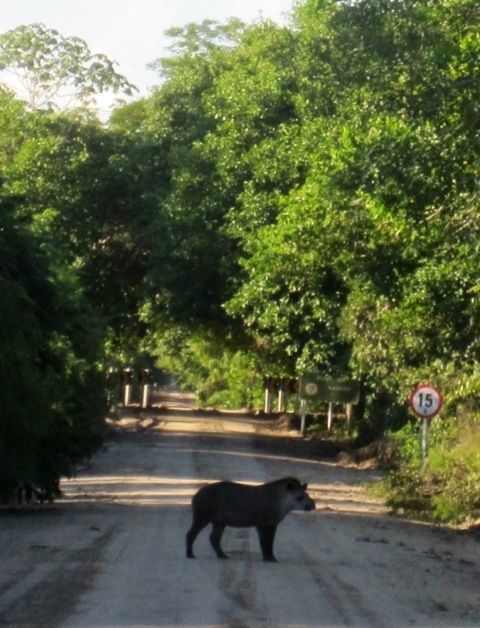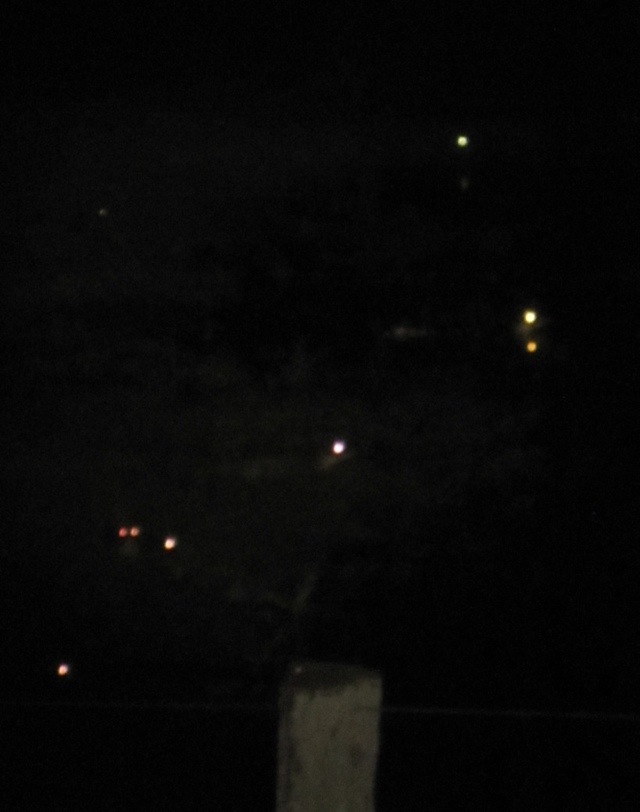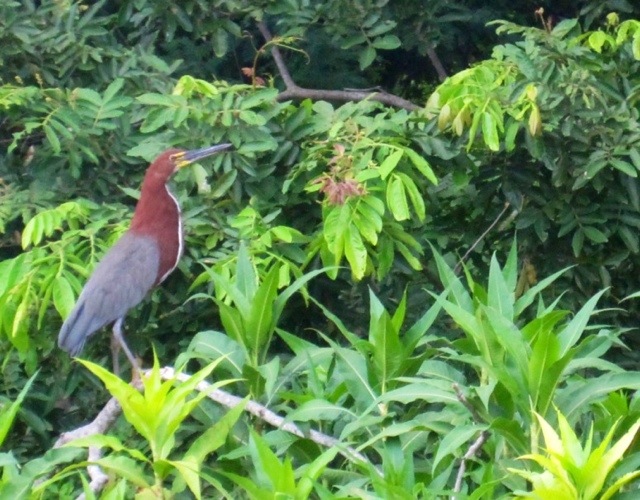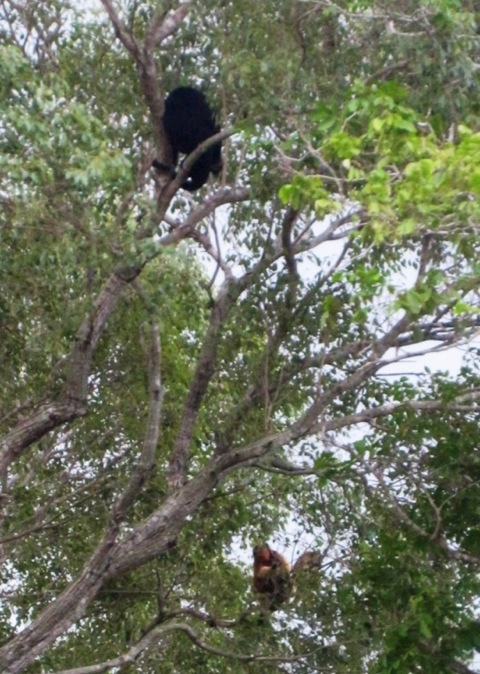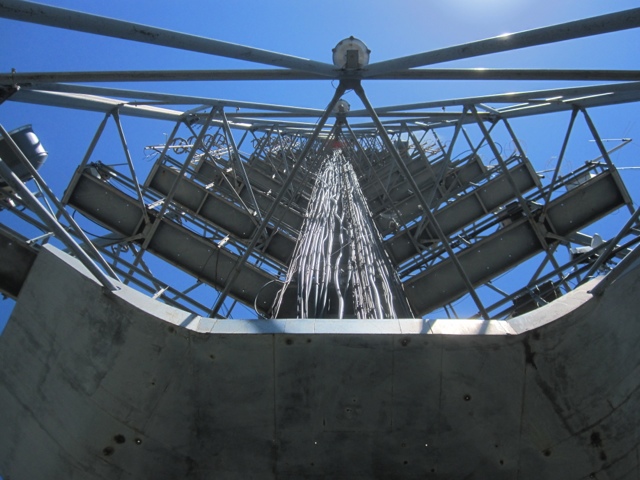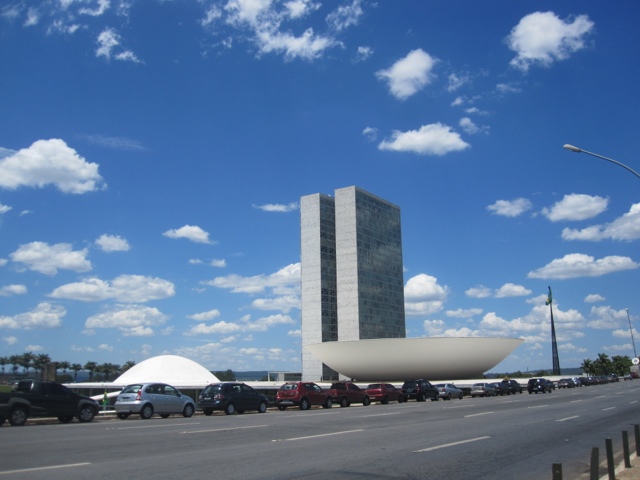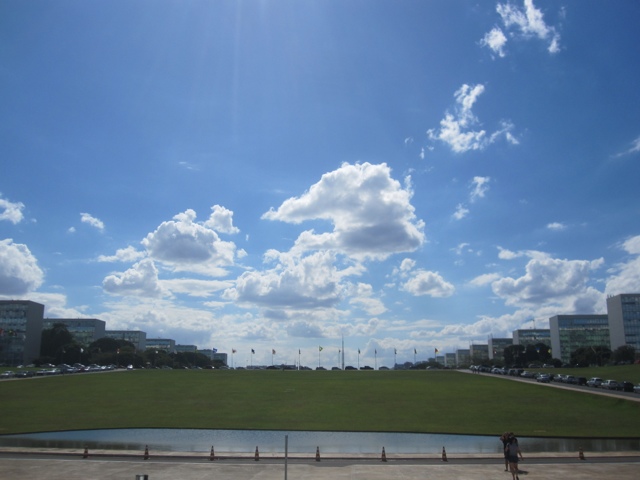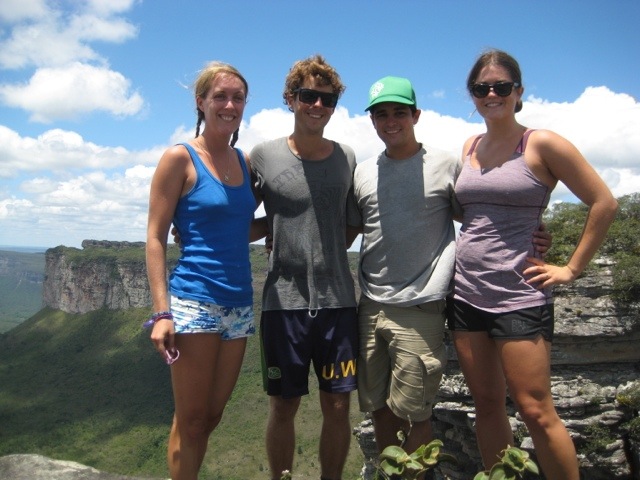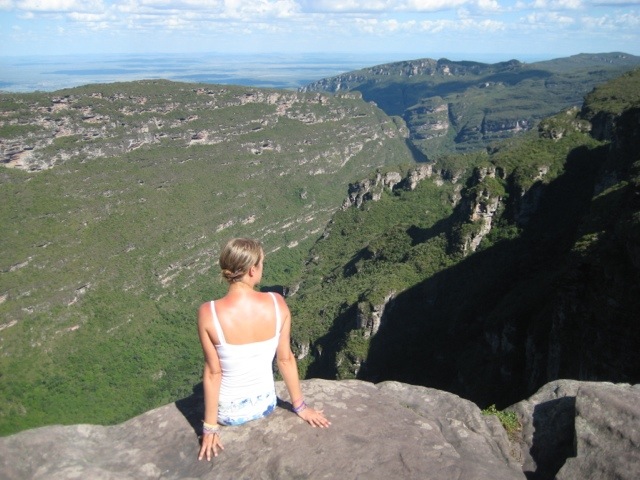Here´s a video of us snorkeling in Bonito.
Bonito
On our way out of Brazil, we made a quick stop at Bonito, a town to the south of the Pantanal that’s famous for its ecological experiences. Chief among them, (and the only place we had time to visit) is Rio da Prata, ‘Silver River’, where the combination of minerals means the water is astonishingly clear – with visibility of up to 30m. We donned wetsuits and snorkels, hired an underwater camera and floated for about 3km downstream along the surface. When we first went into the water, we had the slightly odd sensation of being nibbled by the curious fish, but we got used to it, and were soon gawping at the beauty around us. A detailed explanation by the guide in Portuguese was comically translated for us into the simple phrase “Look at all the fishes!”, and that’s exactly what we did! It was undoubtably one of the best things we’ve done in 7 months of travel, and we’d highly recommend it to anyone – thanks Cas for encouraging us to detour!
The photos do it more justice than I could ever manage with words alone.
Simon
Brazil’s wild beauty
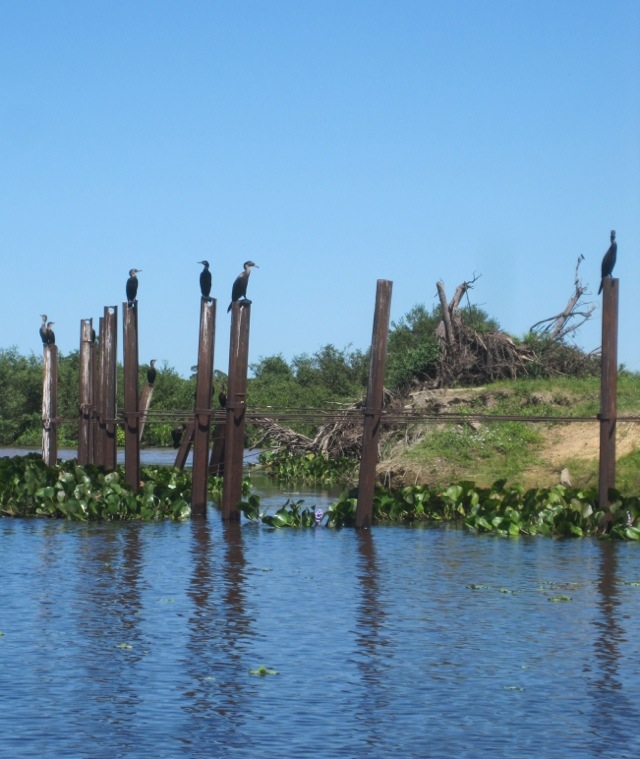
The Pantanal is a huge wetland area on the border between Brazil and Bolivia, 10 times the size of the Florida Everglades. It’s teeming with wildlife, with much of the swampland only accessible by river, and the land owned by various ecological fazendas who subsidise their ranching income (this is cowboy country) through tourism.


We didn’t have much time, so we opted for a package deal that gave us two nights at a fishing lodge on the riverbank and included a range of activities to sample nature. While we were doing this, nature also sampled us – the mosquitos are voracious, and despite DEET and long sleeves, I ended up with no fewer than 30 bites on my back alone!
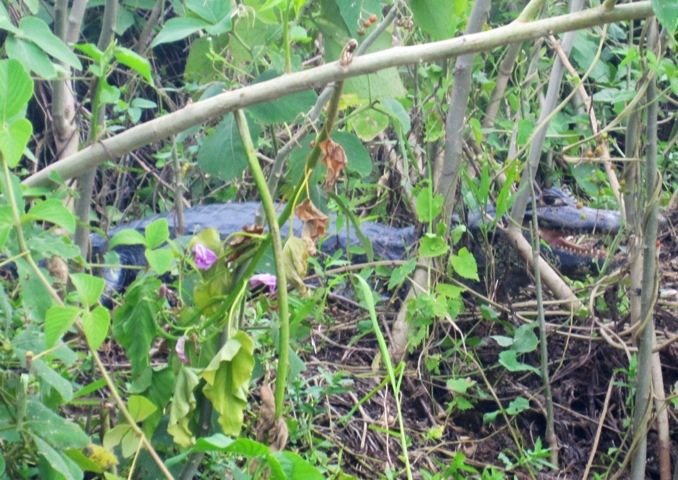
Our first expedition took us on a river safari in a small motorboat for a few hours until sunset. As we cruised along, our guide pointed out innumerable birds of every shape and colour, and we gawped and snapped away on our cameras and feeling inferior to the telephoto paparrazzi madness of some of our fellow tourists. The toucans were particularly memorable, with huge orange beaks, flying surprisingly gracefully through the sky despite their apparent lack of aerodynamics. Every now and again we’d round a corner and find a huge heron basking on the riverbank before they swept into the sky when we got too close. As the sun set, the limited photographic abilities of some of our group came into focus – needless to say, if you want to take a photo of the moon at night, you probably won’t benefit from switching the flash on as one guy did!
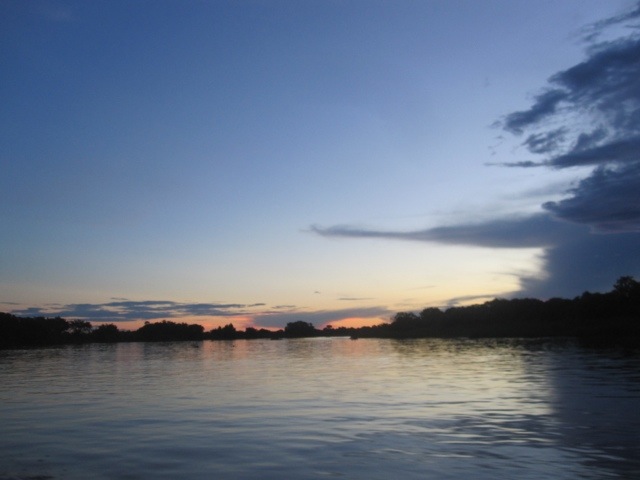
The following morning we got to try our hand at piranha fishing. The location the guide picked for this was a bit of a surprise – the very same river we’d seen people swimming in the previous day! Not only that, but as we headed towards the bank, we spotted a huge Cayman (think alligator) basking in the sun. He moved off as we approached, but we felt less than safe as we stepped onto the ground right where he’d just been! The fishing itself consisted of us putting chunks of steak on the hook on our lines and waiting for the fish to bite; at times it seemed more like we were feeding our quarry than catching it, with the fish pretty skilful at eating the bait without getting caught on the hook. When we did finally get a catch, the piranhas really did look like the creatures of fear they’re reputed to be – a mouth packed with sharp teeth, understandably thrashing around on the end of the line. There was even a special clamp to remove them from the hook to reduce the chance of getting bitten by them. We each caught at least one fish, and then got to taste our catch later at lunch.
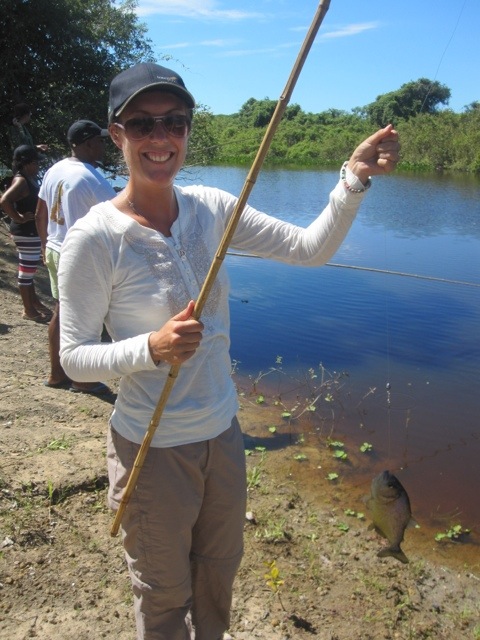
In the late afternoon, we went on a ‘jungle walk’, a group of us guided through the dense forest tracking various animals and trying not to tread on others. Unfortunately some of the group hadn’t quite got into the spirit of keeping quiet so we could see more, and most of the wildlife kept quite a distance. We did however see monkeys in the trees above us, thousands of large red ants emerging through holes in a branch when the guide tapped it, and as darkness fell, a herd of capybara. They’re the largest rodent on earth, a bit like a guinea pig the size of an actual pig and with dark brown fur. They also moved at speed, and as we approached and they decided to move on, it was slightly alarming to suddenly track fifteen or twenty largish creatures sprinting around us. Although we didn’t see a huge amount ourselves, you got the sense that a lot of wildlife saw us from their places of hiding; as it got progressively darker and the sun set, one couldn’t help but wonder quite how close we were to the various beasts of the jungle surrounding us in their camouflage and waiting to defend themselves if not actually pounce.
Our way back along the dirt road that cuts through this bit of the Panatanal was a ‘Night Safari’, which sounds much more exotic than the reality of effectively sitting in a wind tunnel in the darkness with bugs being blasted at you! We were seated safari-style on the back of a pickup truck, with our heads just above the top of the cabin. This meant that anything that flew towards the headlights was deflected by the airflow and ended up flying into our faces. After a few tasters we learned to use our caps to deflect most of the flying protein, but it didn’t make for that great an experience on the hour long journey home! Of the few things the guide pointed out to us with a spotlight, most memorable were the caymans bathing at the river. The animals themselves were too well disguised, but their eyes reflected the spotlight, and in one waterway alone we could make out more than 20 pairs of eyes looking back at us from the depths!
For the final morning of our time in the Pantanal, we went horseriding on a Fazenda. It was fantastic, with blue macaws in the trees around us, and the iconic bird of the Pantanal, the jabiru in some water nearby. At one point we headed out across a lake, with caiman frantically clearing out of the way as we approached, and the water coming up to our feet on the horse. We’d been warned that the horses sometimes jump around if they become aware of snakes and other dangers nearby, but we fortunately all stayed on and had a great time – absolute bliss.
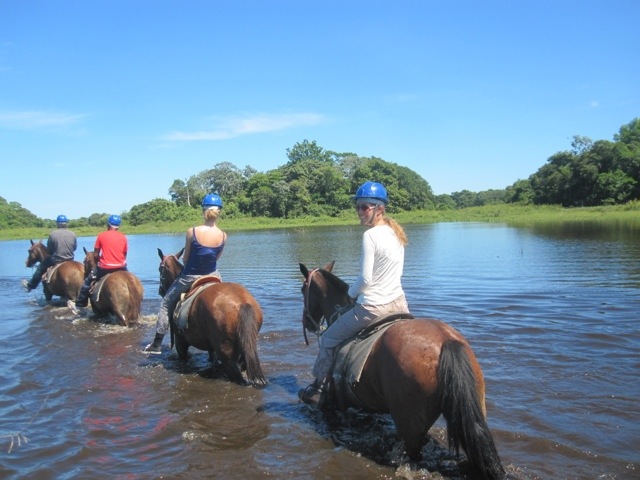
Crossing Brazil
We’re on the road again, finally nearing the end of our three day crossing of Brazil from near Salvador in the north east to the Pantanal in the south west. Brazil is huge – so far we’ve done an 18 hour journey and a 16 hour one. Today’s is a mere six, taking us to the middle of the wildlife wonderland of the Pantanal.
It seems like you could paint the countryside here in three bold brush strokes – a sweeping, solid soft blue for the sky, a wave of bright green for the crops, and then a flick of deep, ferrous red, splattering lots of small dots for the earth. Ok, perhaps the last isn’t technically a brushstroke (I’m no artist), but it does fit the landscape, where the bright soil is exhibited through thousands of termite hills studding the vegetation, each one a tower of dirt a metre high and in places the hills only a few metres apart. That’s a lot of ants!
The fields of the Brazillian interior are fittingly vast, the intensive farming here making those bright green crops stretch over the hills and to the horizon without anything of substance to break them up. Every now and then, there’s a whirling cloud of dust rising into the air like smoke from a bonfire, the trail left behind from a tractor heading out to work.
We broke our journey for a day in Brasilia, the capital since it was created in 1960. I say created because the place is very much an artificial construct, conceived by urban planners and visionaries of Brazil’s rural regeneration, and bizarrely, a 19th century Italian priest.
The story goes that the Turin priest Dom Bosco prophesied that a new civilisation would emerge somewhere between the 15th and 20th parallels, roughly in the centre of Brasil. Years later, in 1955, this was seized upon by President Kubitschek, who used the idea of a new capital to focus Brazillian’s dreams of their country’s emerging power and huge natural wealth, as well as to kick-start economic development of the vast interior plains. Incredibly (and perhaps even more potently as a symbol of the country’s strength), the city was built (mainly) from scratch in just 3 years. As a clean slate, it represents a sixties vision of urban utopia – open skies, outstretched and ordered blocks of grey apartments, six lane highways, lots and lots of concrete and, perhaps a little more surprisingly, a city designed to be the shape of an aeroplane. The ‘pilot plan’ called for the wings to be filled with residential areas, the fuselage to hold key public buildings and rows after row of government ministries, and the cockpit to house congress, the judiciary and the presidential palace. It’s certainly organised, if a bit of a nightmare to negotiate on foot!
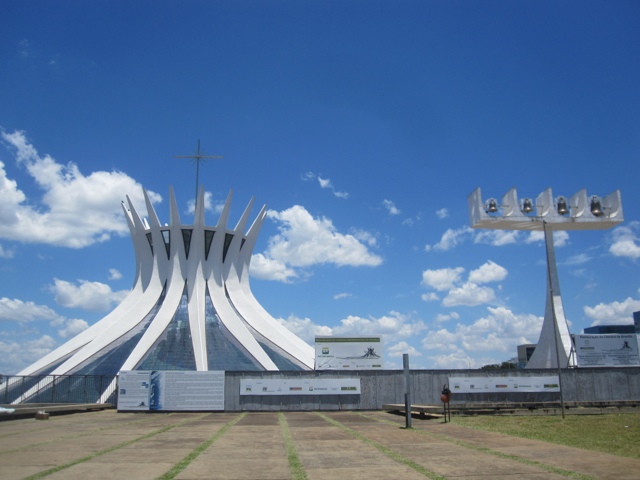
The cathedral (it was closed, so no amazing stained glass this time). Note the innovative bell tower on the right!
I was actually a bit more impressed than I thought I was going to be. Strict planning laws mean that there are huge amounts of open space – you can almost see the whole sky walking down the avenue running down the middle of the ‘plane’; it feels cool and breezy with the air flowing in over a huge artificial lagoon, and some of the architecture – especially the national museum, library and congress – is pretty elegant, if somewhat monolithic. We dropped in to Congress and went on a short guides tour; politicians are the same the world over – each chamber was pretty much deserted except for a lone representative giving a speech for the benefit of TV and some bored looking cameramen.
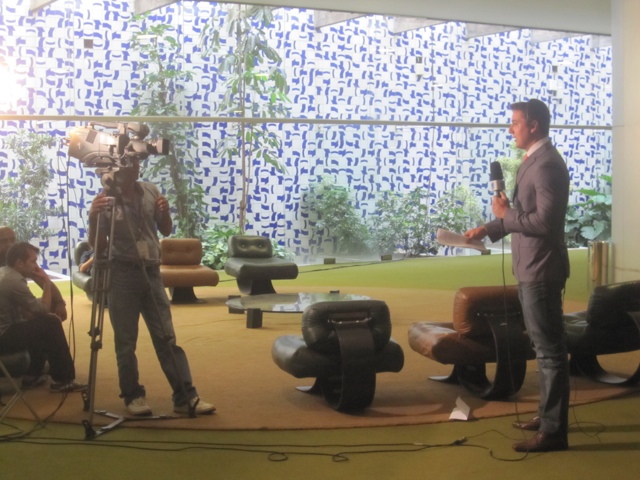
A TV reporter inside the lobby in Congress. You can just about see he's wearing jeans with a suit jacket for the headshot on camera!
Even if opinions are still divided on the success of Brasilia, it’s clear that Brasil has succeeded in what it represented – that this is very much a country on the way up. I gather the news back home has been peppered with reports of Brasil’s economy overtaking that of the UK; from here it isn’t hard to see why.
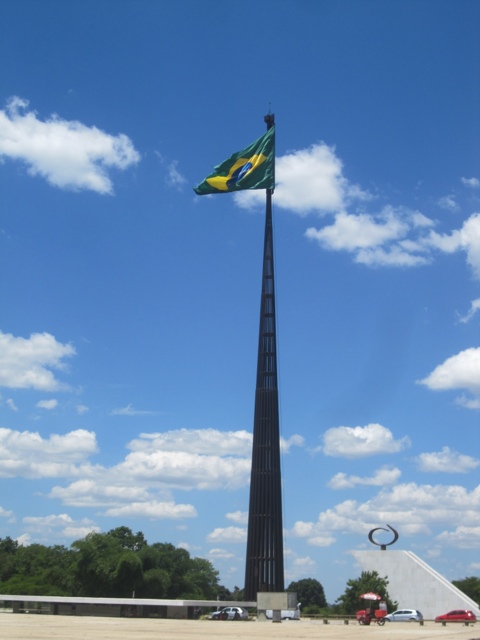
A huge Brazillian flag, 274 square metres in size, with a massive flagpole welded from one from each state
Simon
Lencois – the fork in the path
If there are two things that Brazilians really know how to do, they are embracing the weather and partying! How do you come down from a week-long party like carnival, where the heat gets under your skin and the the atmosphere invades your senses?
Apparently the answer is to get back to nature and head to Lencois.
While Simon headed off on his three day hike I kicked back, made some friends and explored the local area. We spent endless hours chilling out at the nearby waterfalls and swimming holes and then climbed (albeit mostly by car) to the top of Morro do Pai Ignacio, with spectacular views of the surrounding valley. And one day, with me at the wheel, drove out to make the four (or five if you get a little lost and take the wrong fork in the path) hour trek up to the top of Fumaça and back. Ok, so the sense of achievement may not equal that felt on a three day trek with a big pack on your back, but the view is breathtaking nonetheless!
Our trip to Fumaça was topped off with a dip at some nearby (lower level) waterfalls, a cool, refreshing and well earned Acai, and some star gazing which ended in near hysterical laughter.
Before you hit the main road back to Lencois there are 16 km of dirt road to be navigated, a slow and slightly disconcerting experience after dark. Nevertheless what better opportunity to switch off the engine and headlights, hop out and really take in the sparkling night sky? The four of us girls had had a fantastic day, we’d set out on our own, made our way to the top of Brazil’s highest waterfall, but now was time revert to girly stereotype, as we heard a car coming down the pitch black road towards us. With Cas shouting “turn on the lights!” and Constanza screaming”get in the car!!” panic ensued as we attempted to pile in and get away in about two seconds flat. The car wouldn’t start, mayhem took hold and as the other car rolled on by we all burst out into fits of laughter at our completely unwarranted and nonsensical frenzy. Perhaps you had to be there, but that memory will make me chuckle for a long time to come!

